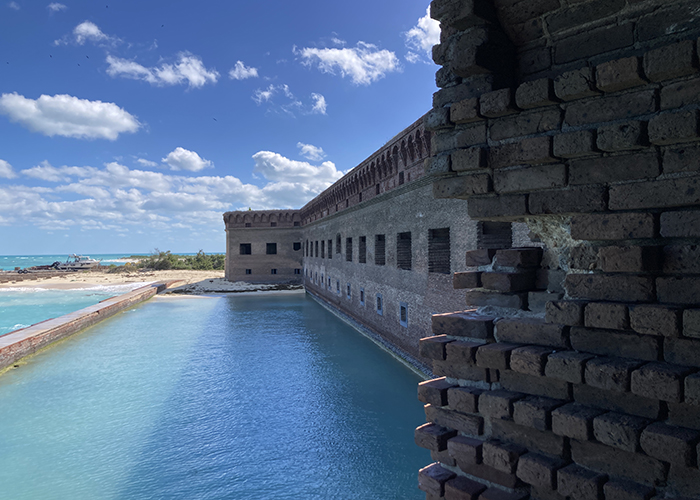 More 2023 Adventures |
Miami, FL → Dry Tortugas NP → Key West, FL 300.0 mi (482.8 km) |
 Next Day |
Rise and Sunshine State, everyone!
I’m back on the trail of adventure, and this time, the logistics are outrageous! I’ve returned to Florida to wrap up its national parks, but when I booked my flights, I completely forgot that lots of folks are traveling for the winter holidays. That meant one critical detail: boats were booked! Yup. Last night, I landed in Miami and drove all three and a half hours south to Key West, because there was only one boat going to Dry Tortugas National Park this entire week, and that boat was scheduled to depart at 8:00 AM the next morning!
 |
On top of it all, I had a heck of a time checking into the historic Duval Inn, because its parking lot was half a mile away! Once I got in though, the accommodations were downright comfy. After all, they’ve had since 1895 to figure out how to treat visitors just right. Well, sort of. From 1895 to 1907, it was the home of Bahamian homesteader, Margaret Stirrup, then a parish house for the Cuban Trinity Church, then a private residence again, and finally, an inn since 1982! They made some good decisions, though, because despite all the partying going on nearby on Duval Street, I slept like a reef!
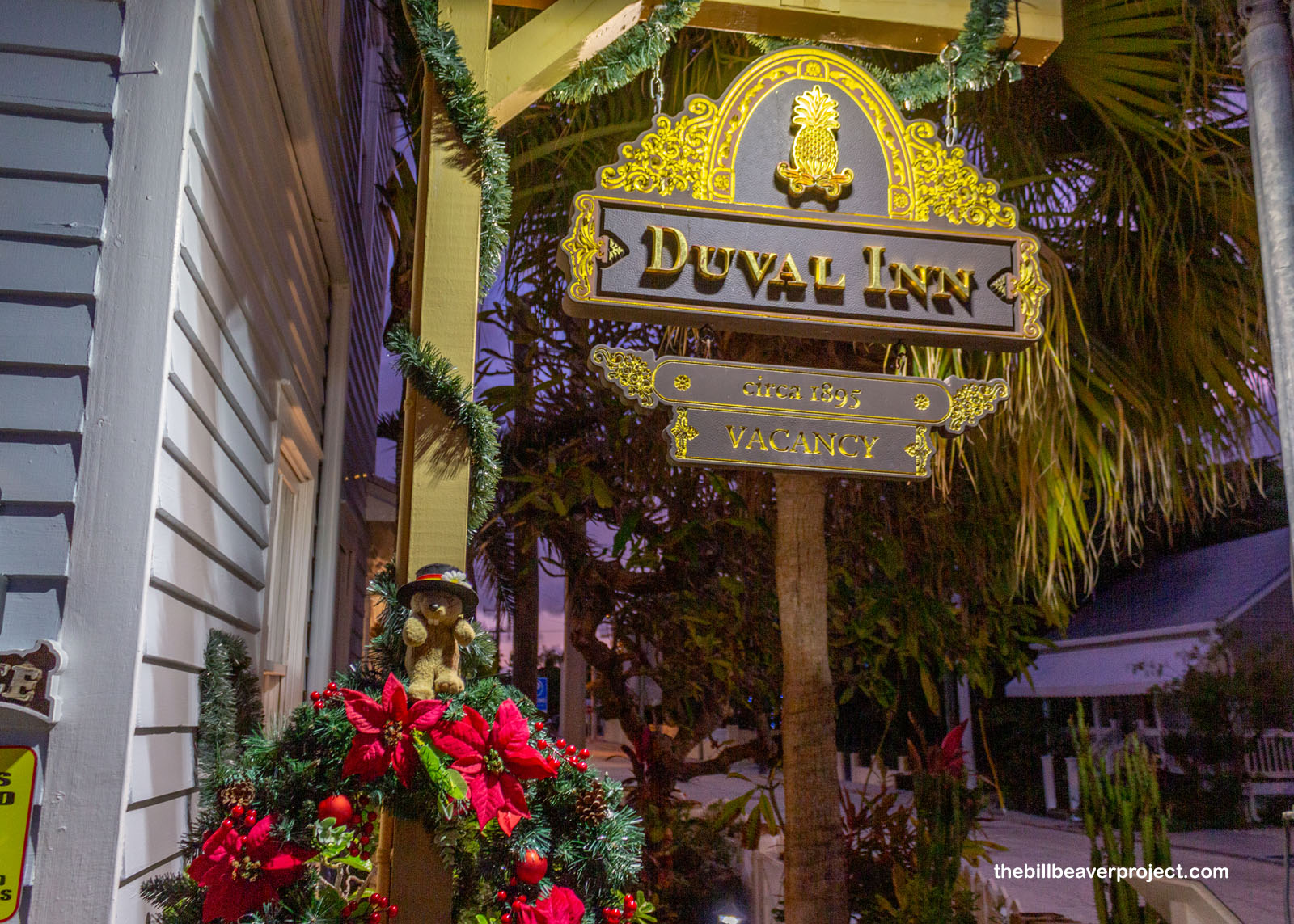 |
That was good, because I was up and at ’em super early, starting at the Southernmost Point in the Continental U.S.A (not to be confused with the southernmost point in the whole U.S.A.). There’s a lot of history painted onto this buoy! For instance, the distance to Cuba harkens back to when Key West (Cayo Hueso, or “bone key” in Spanish) was a major escape port for Cubans fleeing the war of independence from Spain! After they settled here, Cuban expats made Key West the cigar-making capital of America for many years! Additionally, the Conch Republic label calls out the most recent Southern Secession, when Key West “seceded” from the Union on April 23, 1982 to protest a narcotics/immigration roadblock that made it hard to get back and forth to the mainland!
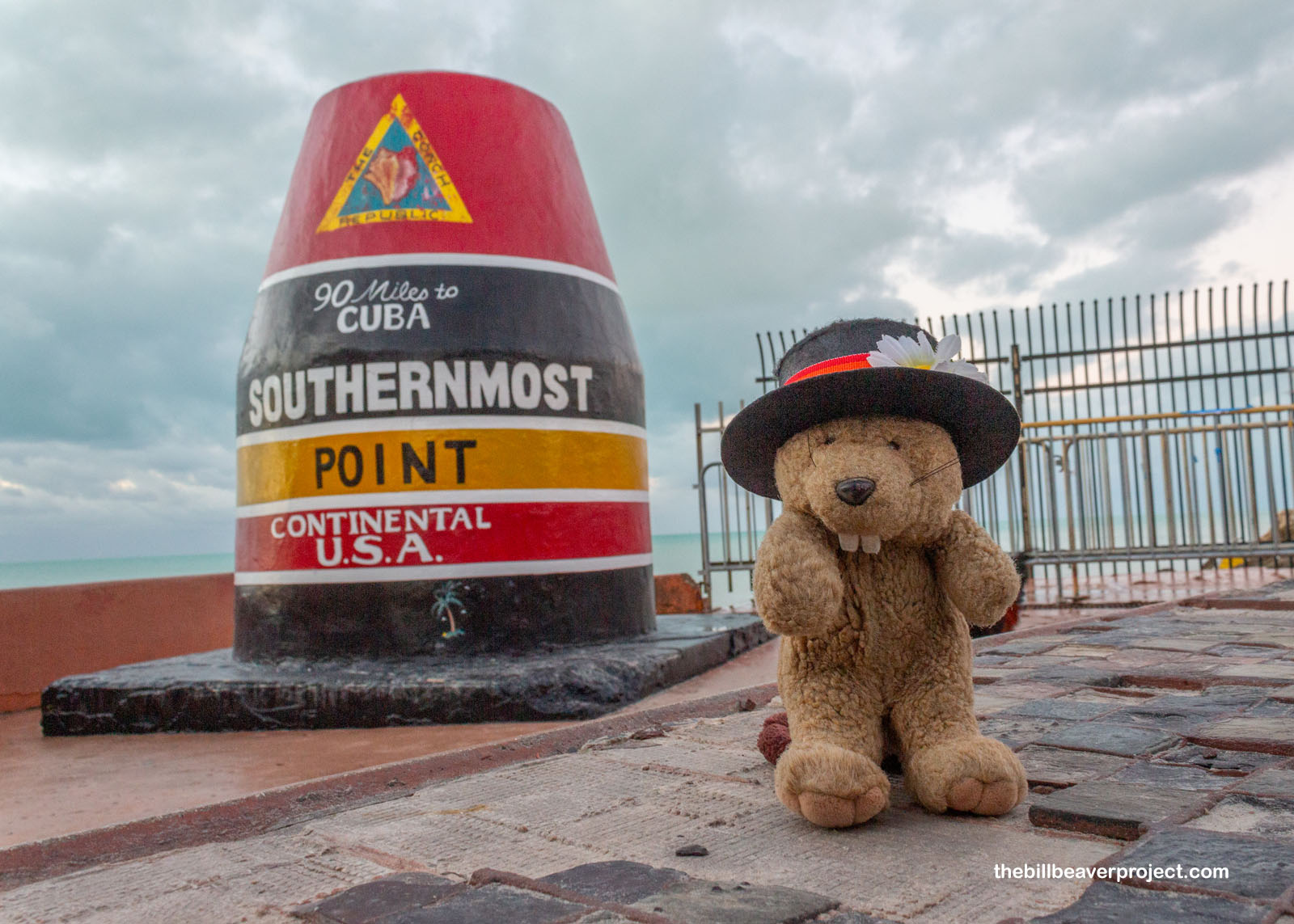 |
Despite all of that, the only regular ferry that makes the daily 70-mile journey from Key West to Dry Tortugas National Park is called the Yankee Freedom III, and that was the boat I boarded at 7:30 AM! Over the course of the two-and-a-half-hour crossing, they warned us that recent storms had left the water pretty murky, so snorkeling wasn’t going to be great. Also, the wind made the water choppy, so just as Whitney Houston sang “And I will always love you” over the boat’s speakers, folks started puking left and right all around me! Needless to say, I was pretty relieved when, at last, this huge catamaran slowed down and docked at Garden Key. I’d reached the remote Dry Tortugas National Park!
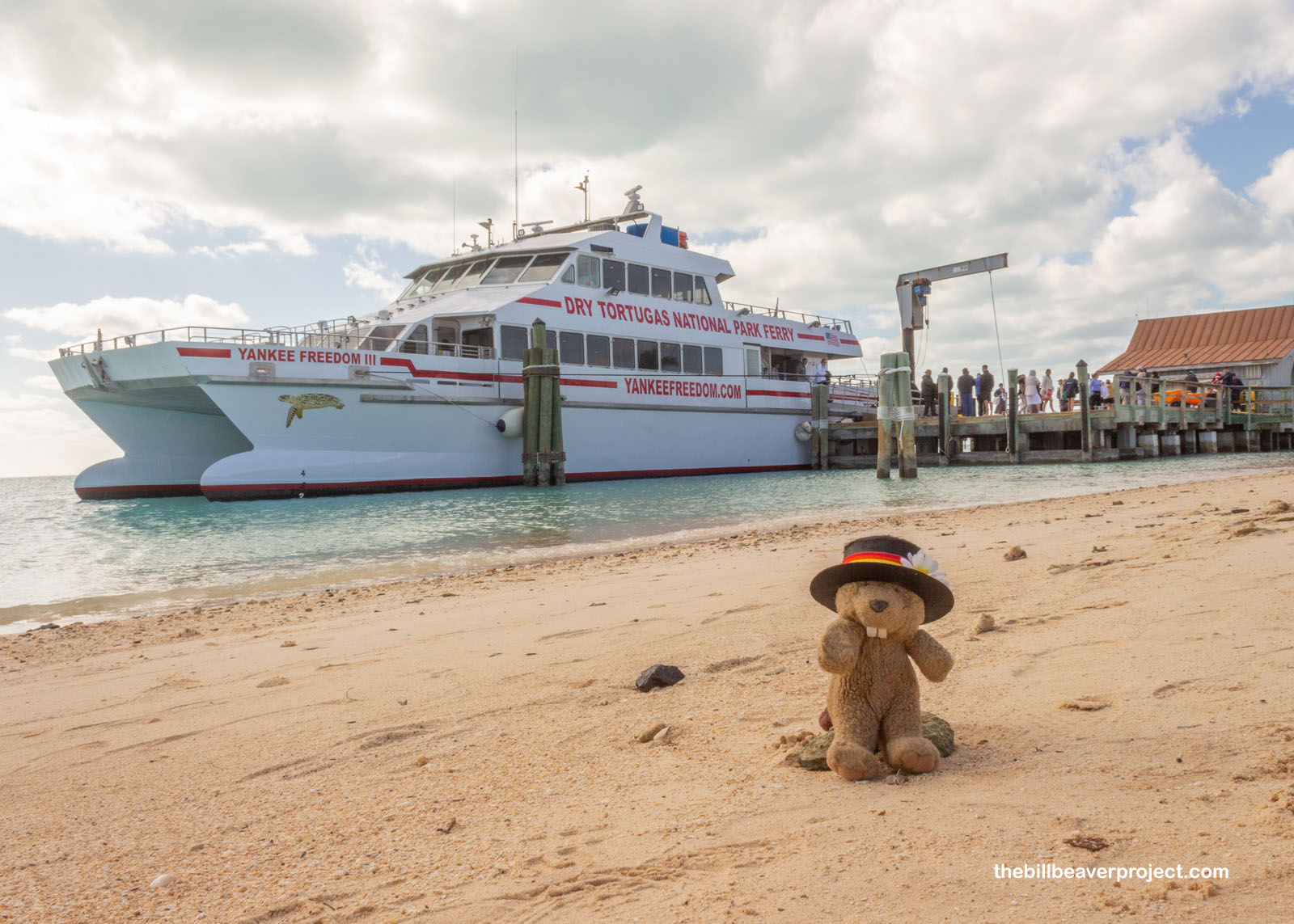 |
First and foremost, it was impossible to miss this park’s centerpiece: Fort Jefferson, the largest brick fort in the Americas! But what the heck was the largest brick fort in the Americas doing way out here? Well, it’s not as absurd as it might seem. The Florida Keys stretch way out into the Gulf of Mexico, and a well-armed fort at the tip of them meant extra protection for the ports of Mobile, Pensacola, and New Orleans!
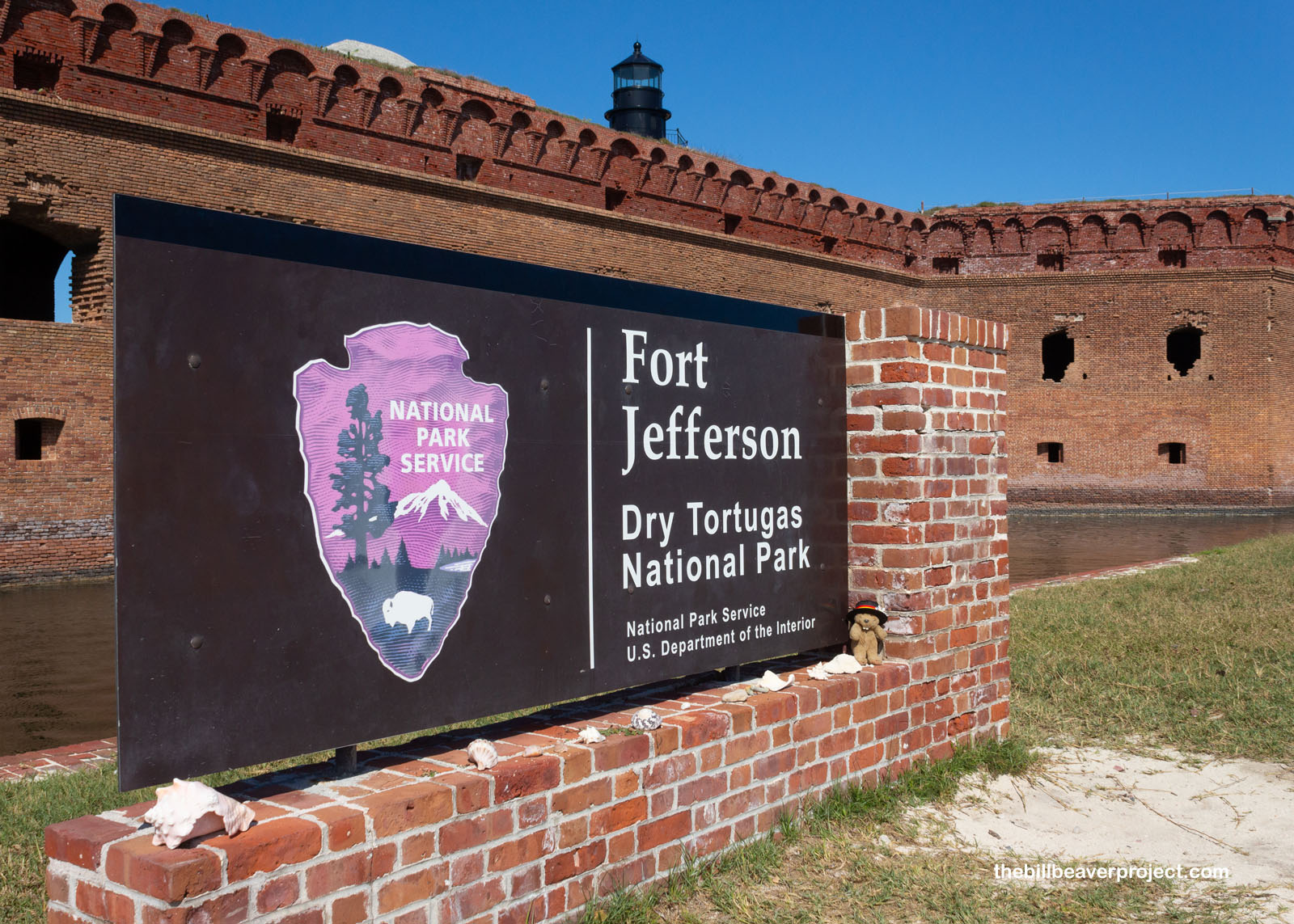 |
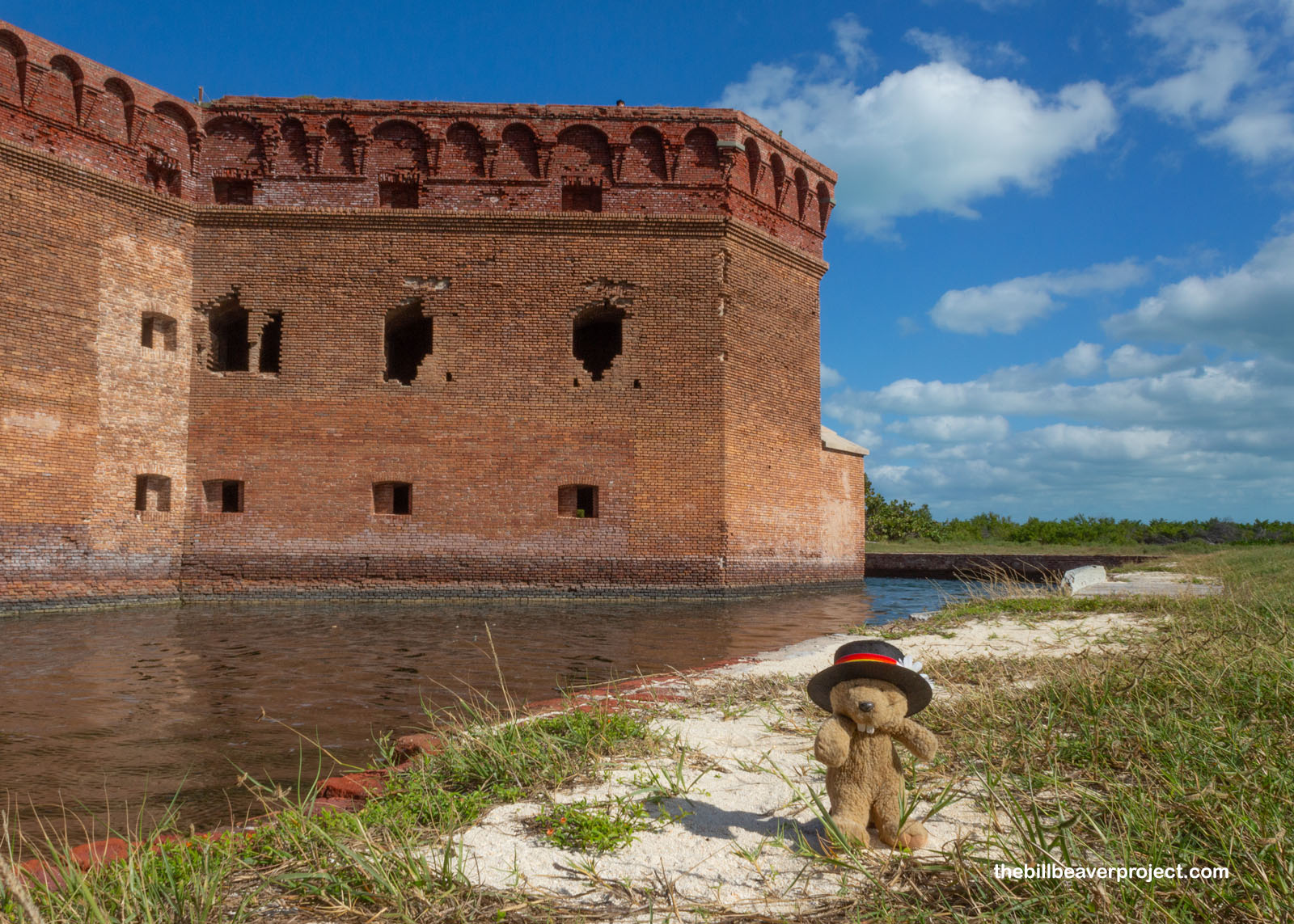 |
Being so remote had its drawbacks, though! It was super hard to get all these bricks out here to build the fort, especially during the Civil War when they had to switch from a Pensacola brick company to one way up in Maine! Construction dragged on from 1846 until 1875 until they finally just gave up. The military abandoned the fort, and it served as a coal station for warships, the final stop on the doomed voyage of the U.S.S. Maine in 1898! Finished or not, I could tell that there would be plenty to see inside this historic fort!
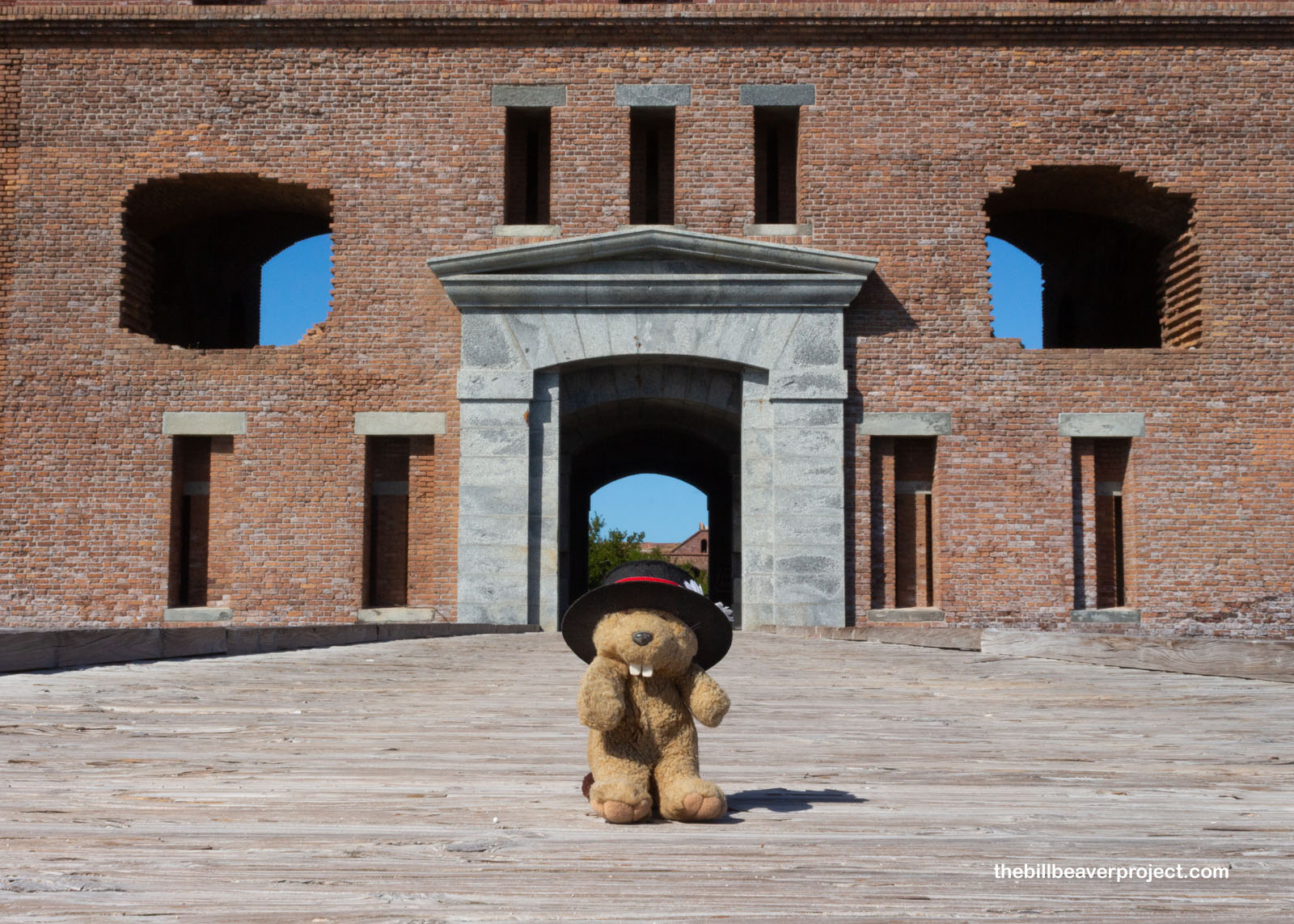 |
Inside the walls was a whole ecosystem! Last week’s rains had left big puddles, which led me to wonder why these were the “Dry” Tortugas. Did they just need lotion? Were they teetotalers? Nope, said the ranger, it’s much simpler than that: Juan Ponce de León passed here in 1513 and caught a ton of sea turtles, calling these keys Las Tortugas! Centuries later, English speakers noticed there was no fresh water on this island and called them the Dry Tortugas! So how did folks get something to drink when they were stationed here? Well, that partly came from rainwater collected in cisterns and partly from steam condensers, which could distill 7,000 gallons of sea water a day!
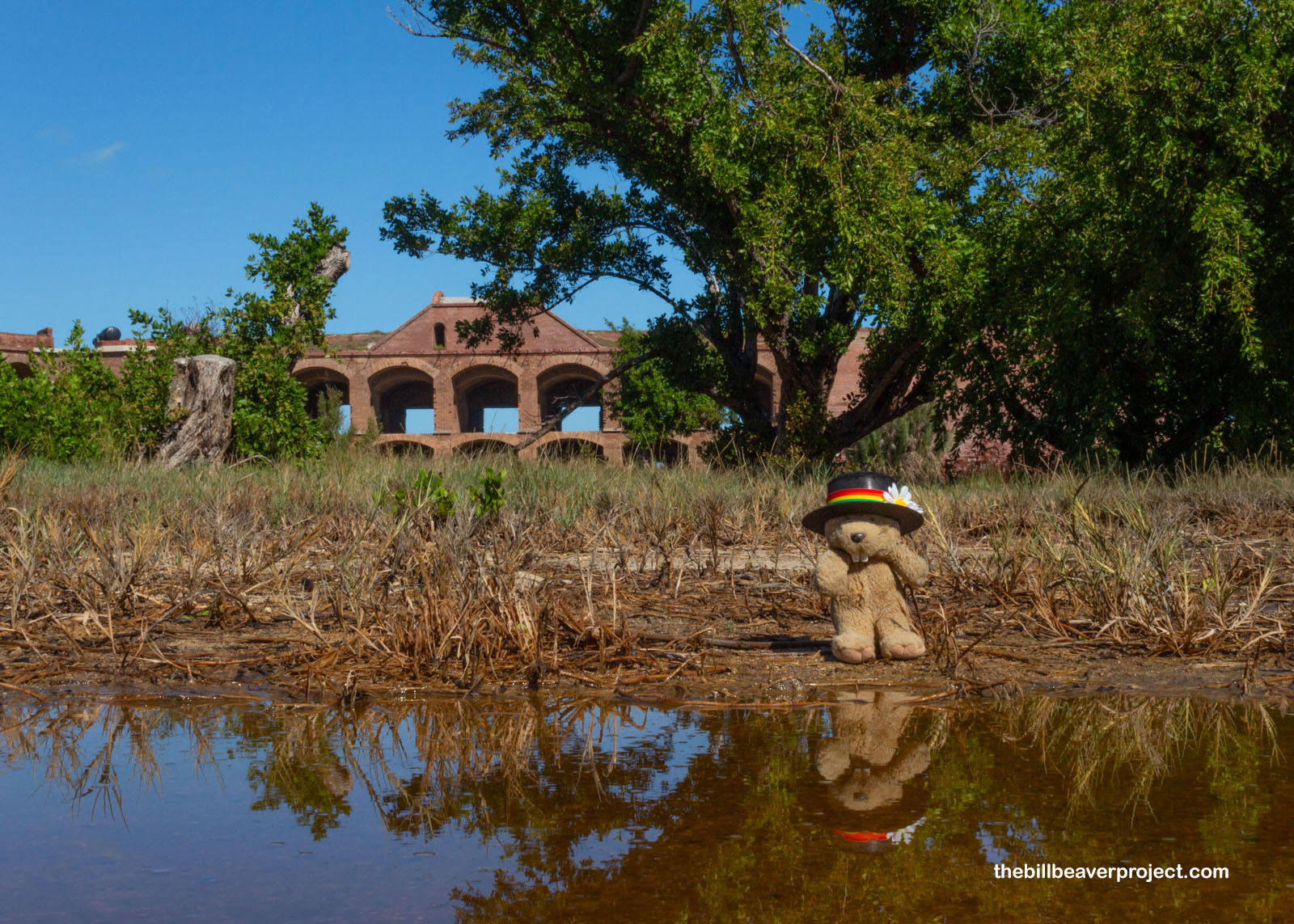 |
And there were lots of cups to fill! At the height of the Civil War, there were 1,729 soldiers stationed here, plus some of their families and the construction workers, who were mostly Black or recent immigrants! Despite being so far south, Fort Jefferson, like Fort Monroe, stayed in Union hands throughout the Civil War, but unlike Fort Monroe, never saw combat! Being so remote, it became a prison for certain notorious criminals, from four co-conspirators in the assassination of Abraham Lincoln to George St. Leger Grenfell, who plotted to overthrow the state governments of Ohio, Indiana, and Illinois, then escaped his life sentence at Fort Jefferson, probably lost to stormy seas!
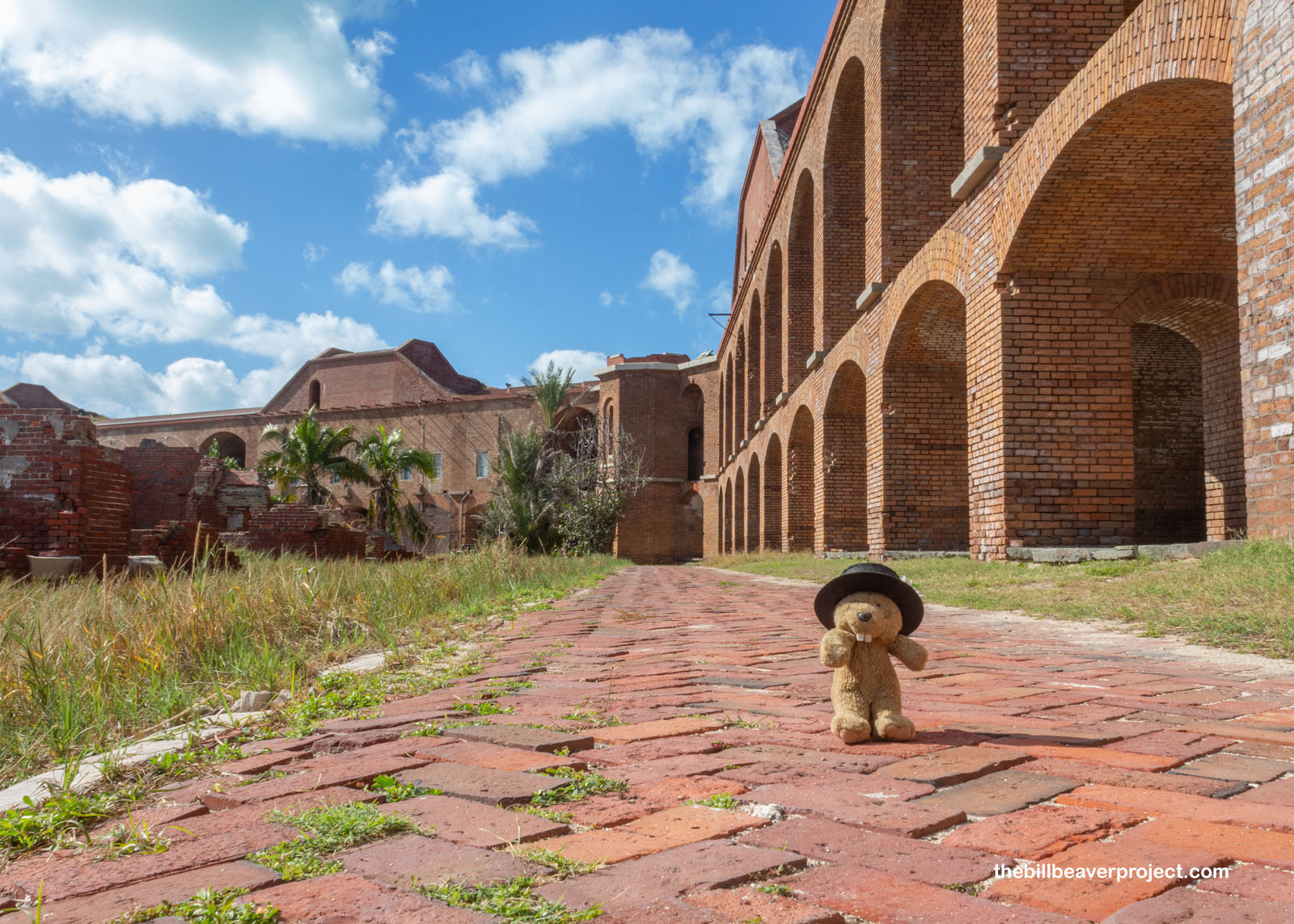 |
Stormy, it was not today! I ducked inside the casemates of the fort’s wall to get a little shade. After all these years, the tracks from the guns—150 on each level!—were still in place, leading all the way down the corridor. Pointing toward the ocean through openings called embrasures, the guns would swivel on these tracks to get just the right angle. I wondered if they ever ran drills that had all of the guns moving together in unison. That must have been a sight (and a sound)!
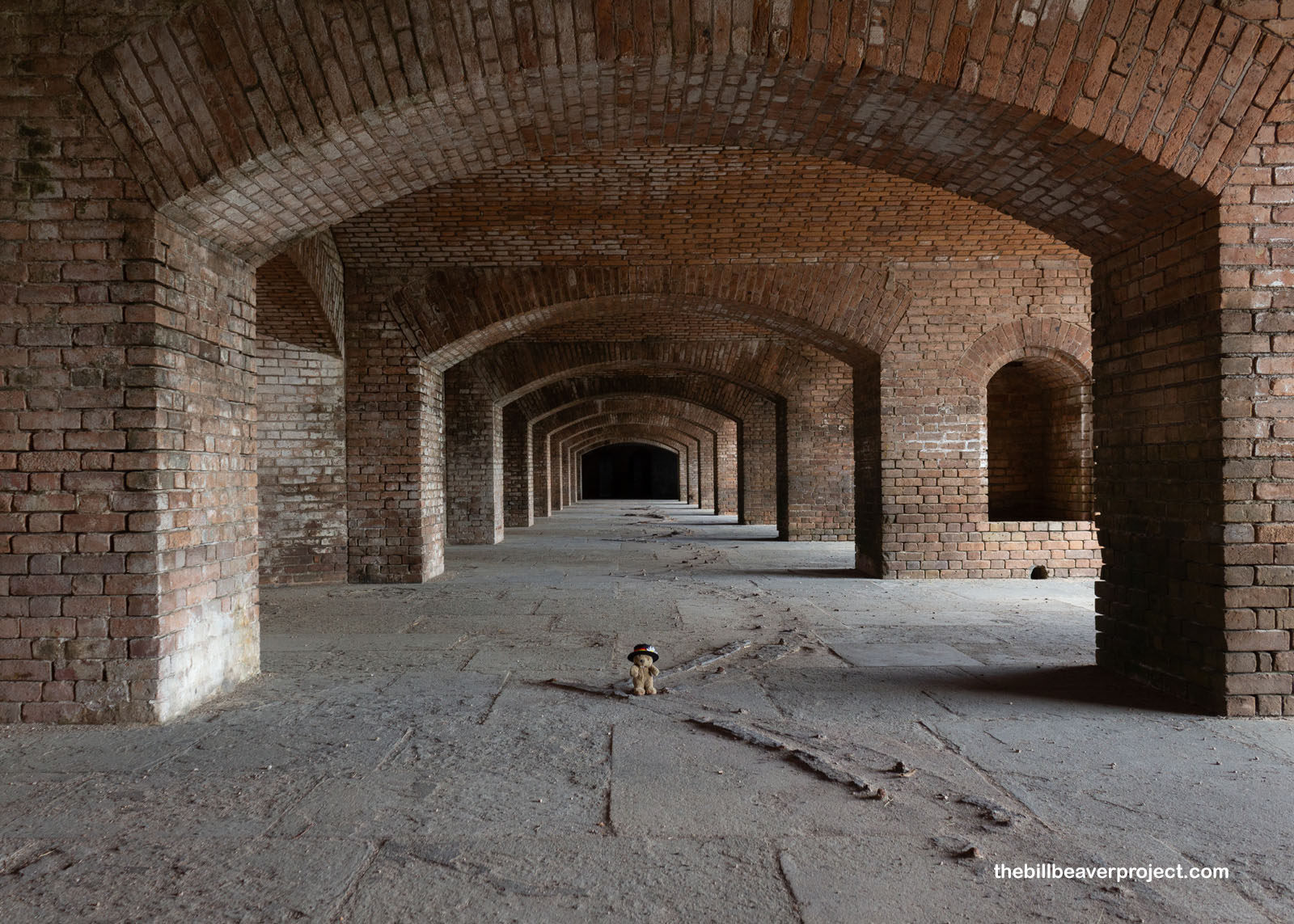 |
And some of those cannonballs, when they went off, were super-heated to light ships on fire! That was accomplished by loading them into the high end of this hot shot furnace to roll down and sit over blazing hot coals for thirty minutes. Then, soldiers with tongs and ladles would run with them to guns all around the fort like a really dangerous egg-and-spoon race! This hot shot furnace is the largest and the last of its kind in the USA, as super-heated cannonballs would be replaced by explosives and wooden ships replaced by iron ones in the years following the Civil War!
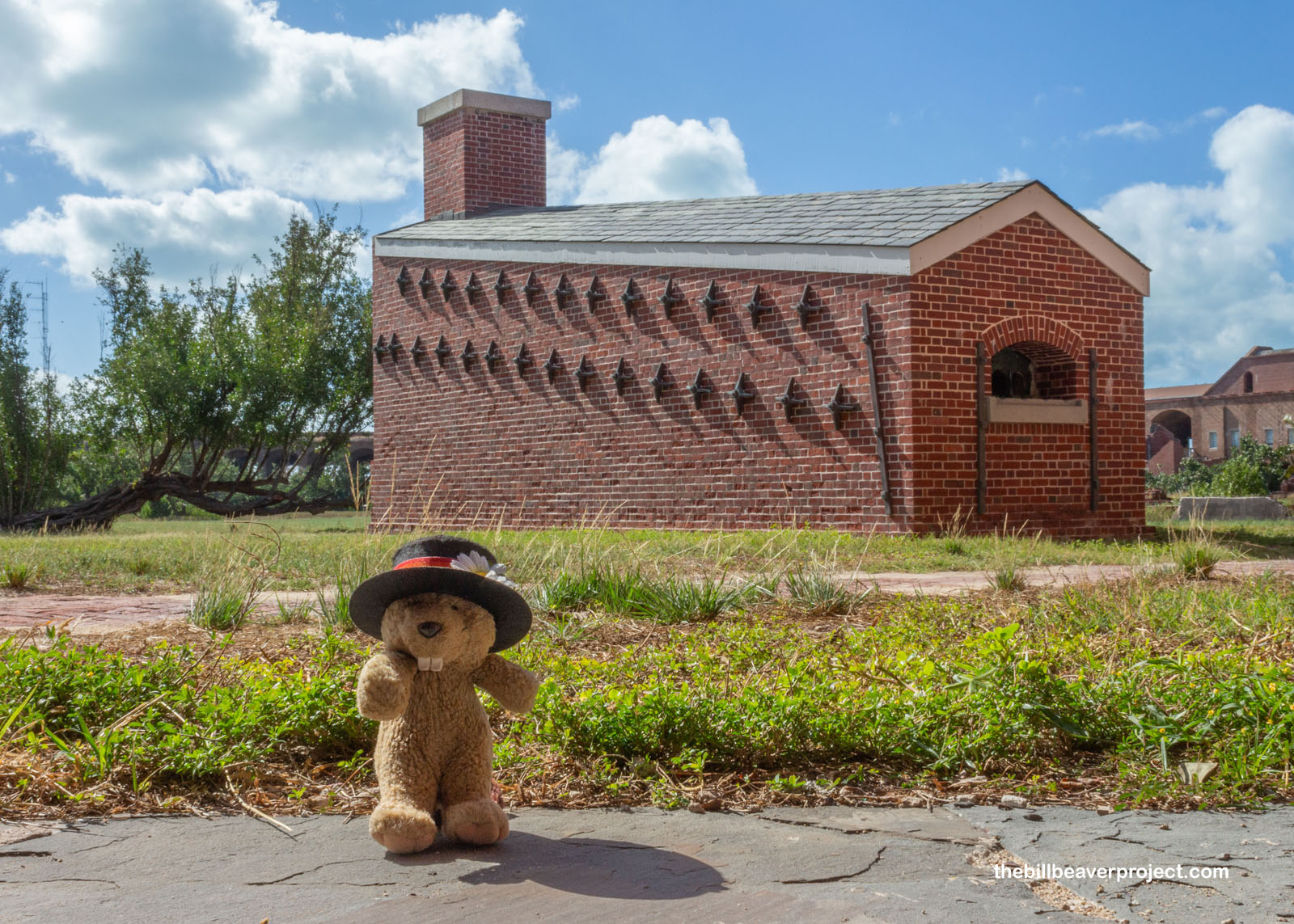 |
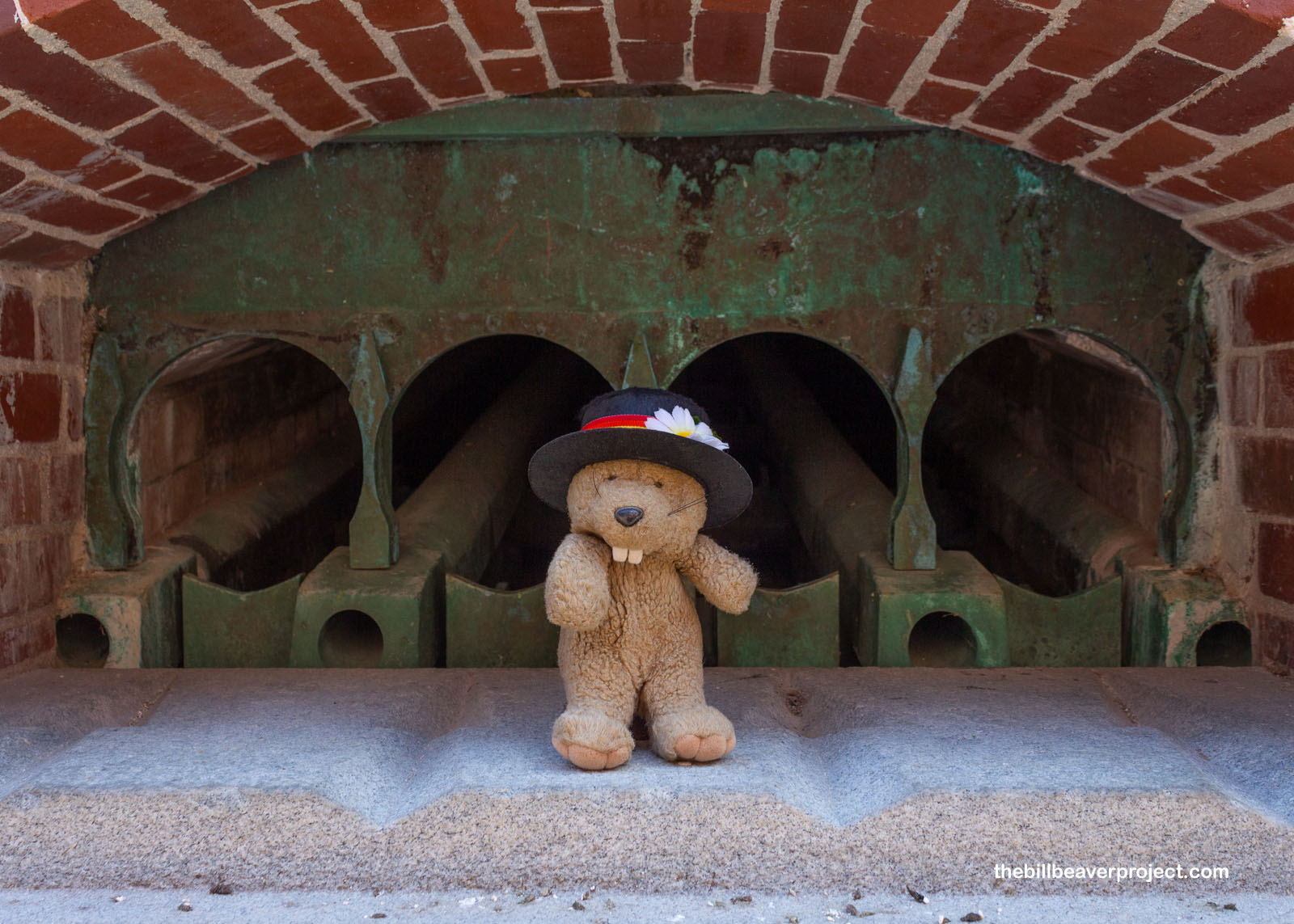 |
Fort Jefferson, like a cake of war, was built in layers, each connected by a stone, spiral staircase. I wanted to work my way up to the top, but first, a little more time in the shade. It being a mildly chill afternoon in December, I couldn’t imagine being stationed here in the blazing heat and humidity of a Gulf summer!
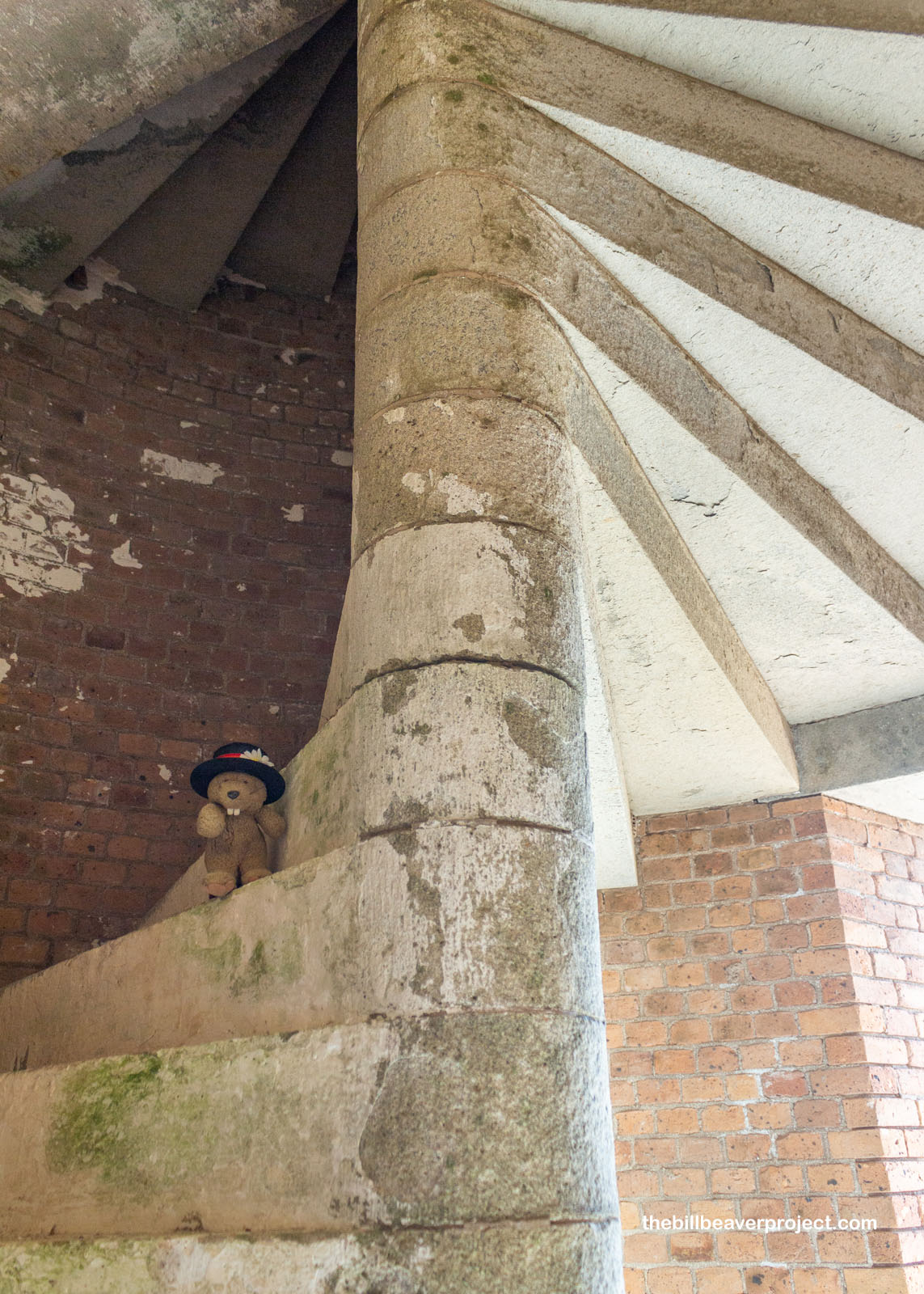 |
Once on the second level, I got a fine view of the north side of the fort, and the crystal blue moat adding extra protection from anyone who’d just braved miles and miles of ocean by ship and found themselves with even more ocean water to cross without a ship! Up here, the wind really was whipping, though. It was just chilly enough that I wasn’t so sure that snorkeling would be a good idea. Well, plenty more time to explore!
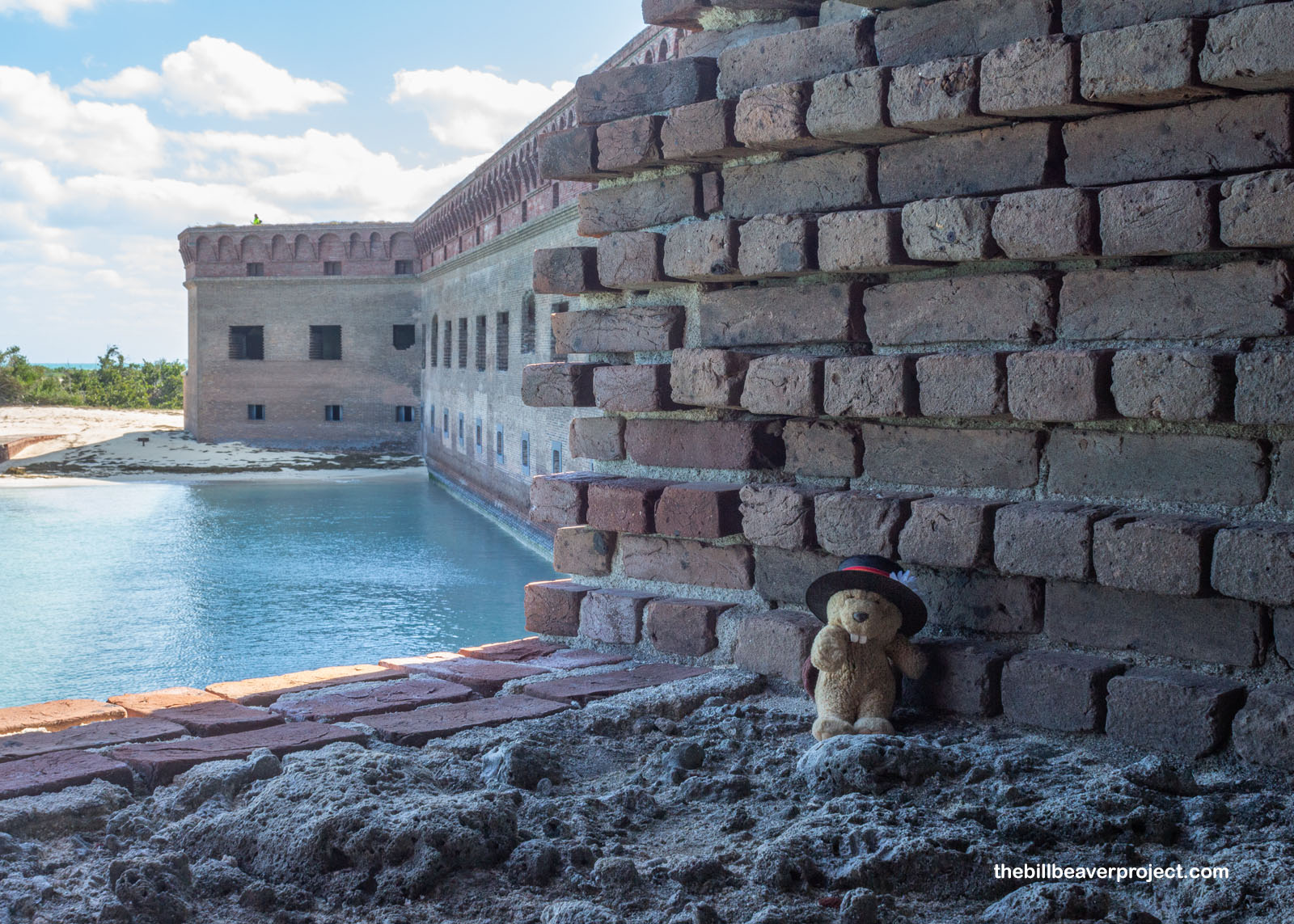 |
There was a big surprise on the second level: stalactites and stalagmites! Whoa! In caves, these take thousands of years to form, but Fort Jefferson has been around less than two hundred. How is that? Well, aboveground, there’s a lot more water activity than just a few drips. Like limestone, the lime-rich mortar holding the bricks together dissolves in rain and draws minerals down from the ceiling to the floor of the fort. These are technically called calthemites, and unlike their subterranean cousins, which grow at 0.1 to 0.2 millimeters per year, these exposed formations grow up to two millimeters per day!
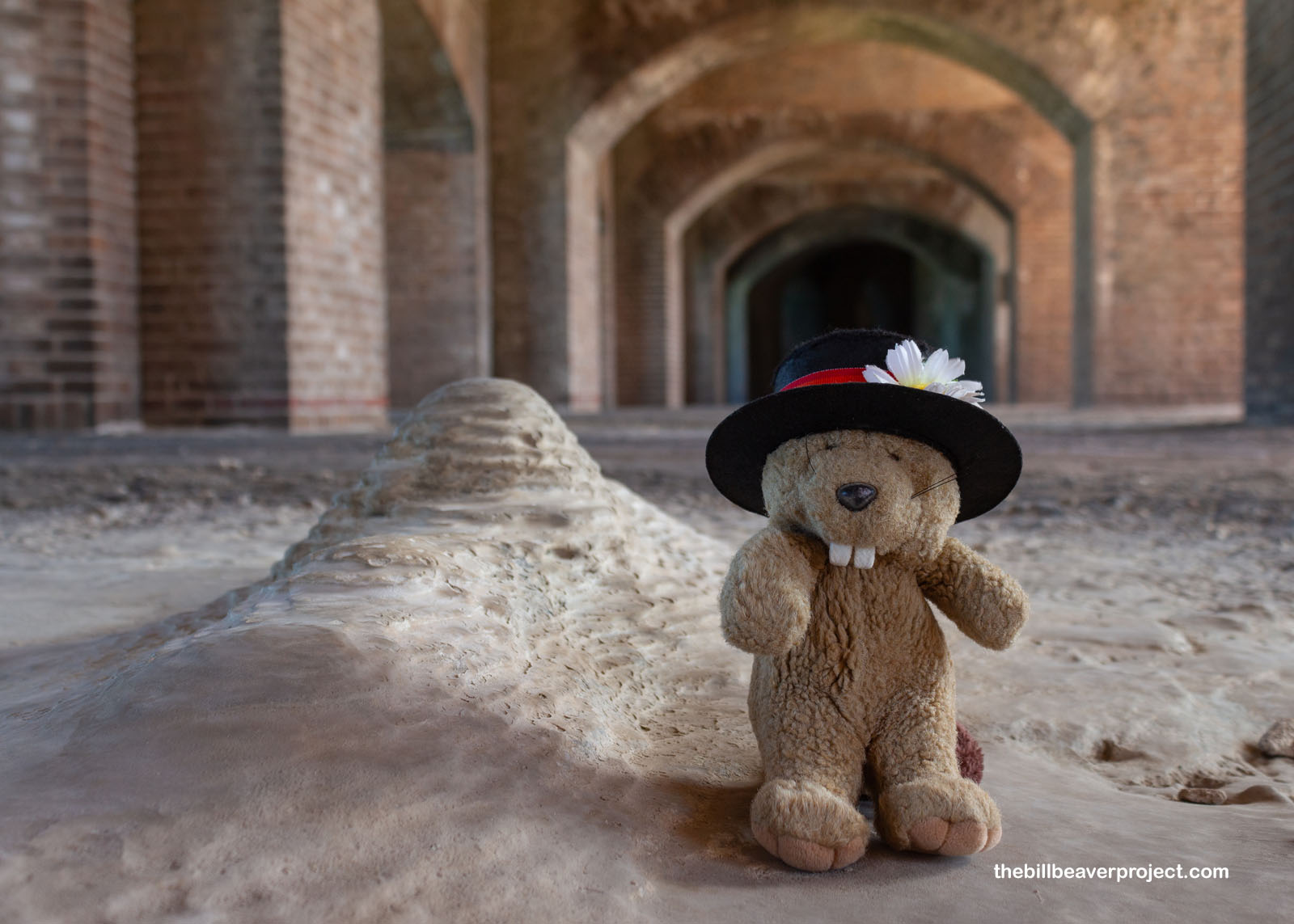 |
Ascending one more spiral staircase, I stepped out onto the top level of the fort for a really good look. What a huge place this was! It was reported to be as bustling as a city during the height of its occupation, full of military personnel and civilians alike, and on all sides, it was surrounded by huge guns like this 10-inch Rodman! Then, there was nothing beyond but the deep blue!
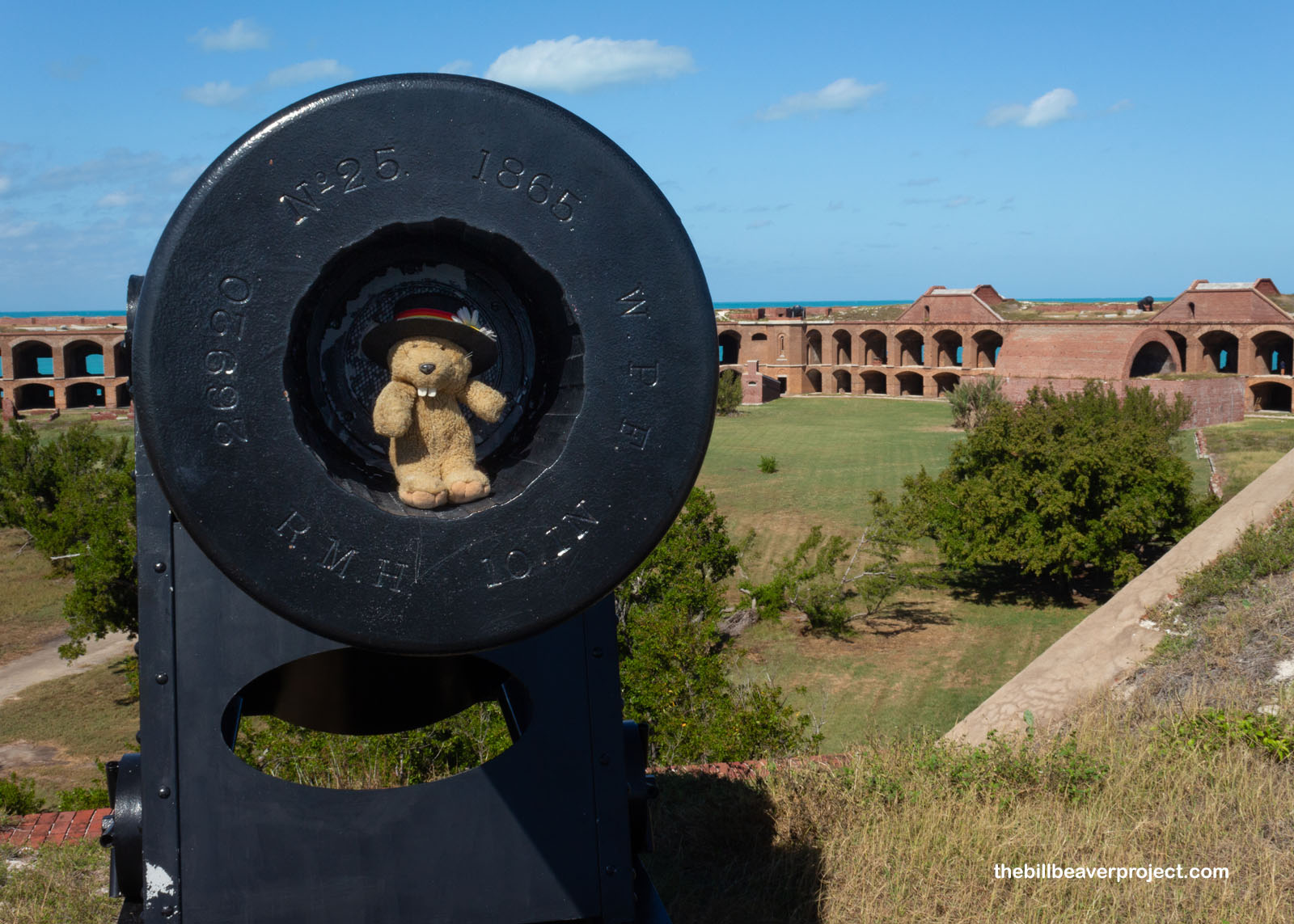 |
Naturally, anyone approaching these shallow, coral-rich waters would need a guide, and a lighthouse was a first priority on Garden Key. The first was built on the ground in 1824, then moved up to the top of Fort Jefferson in 1877, becoming a 70-foot boilerplate iron tower with a First Order Fresnel Lens! This third rendition of the Garden Key Light shone all the way until its 100th year in 1924!
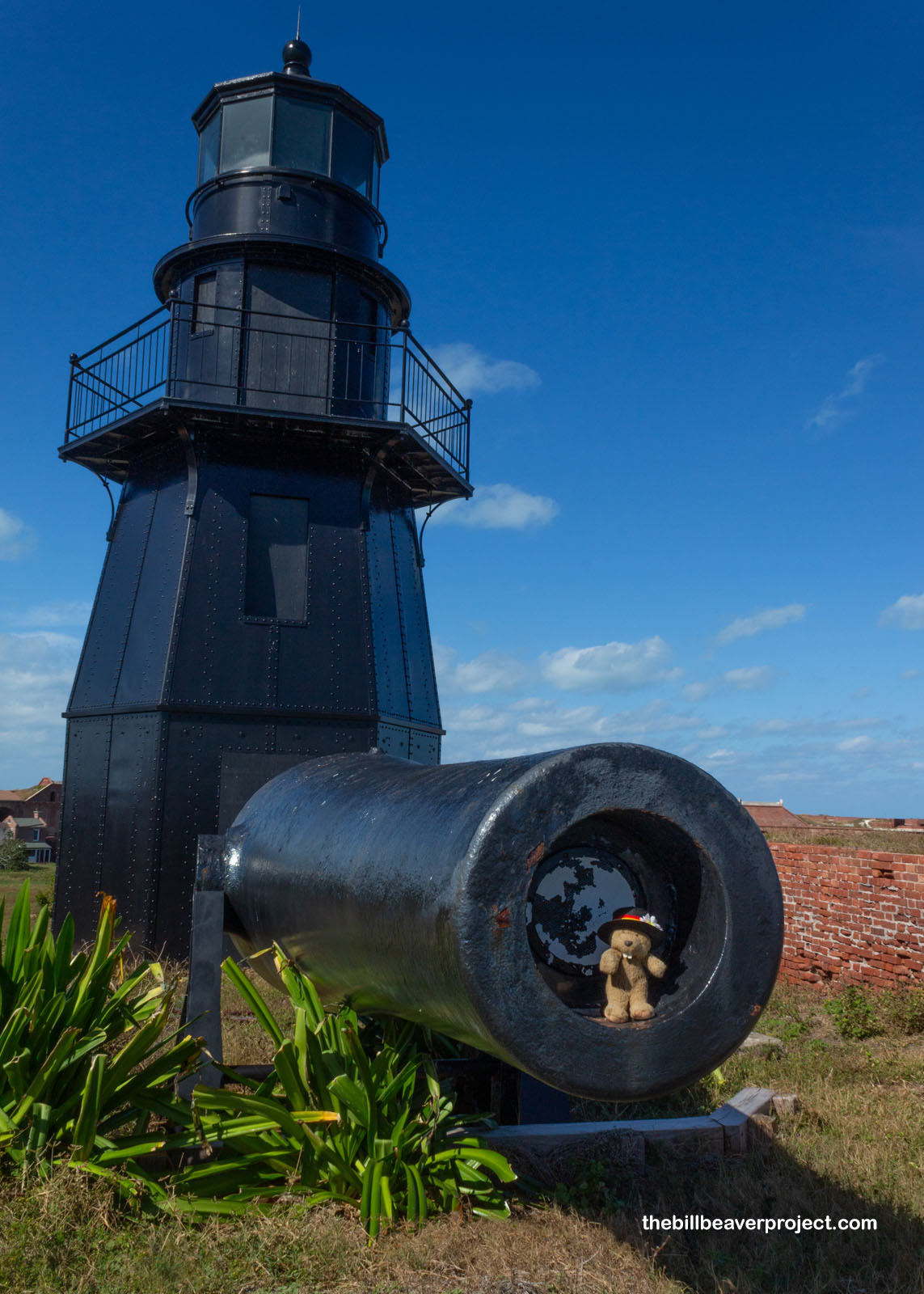 |
I made my circuit of the top level of Fort Jefferson then spiraled down and out. While the staff of the Yankee Freedom III evacuated the boat for a routine security check—illegal immigration still happens at Dry Tortugas—I set off to see what I could see on Bush Key! Right off the bat, I spotted some pieces of history in the waves, particularly some washed-up chunks of coal left behind from the post-military occupation of Garden Key!
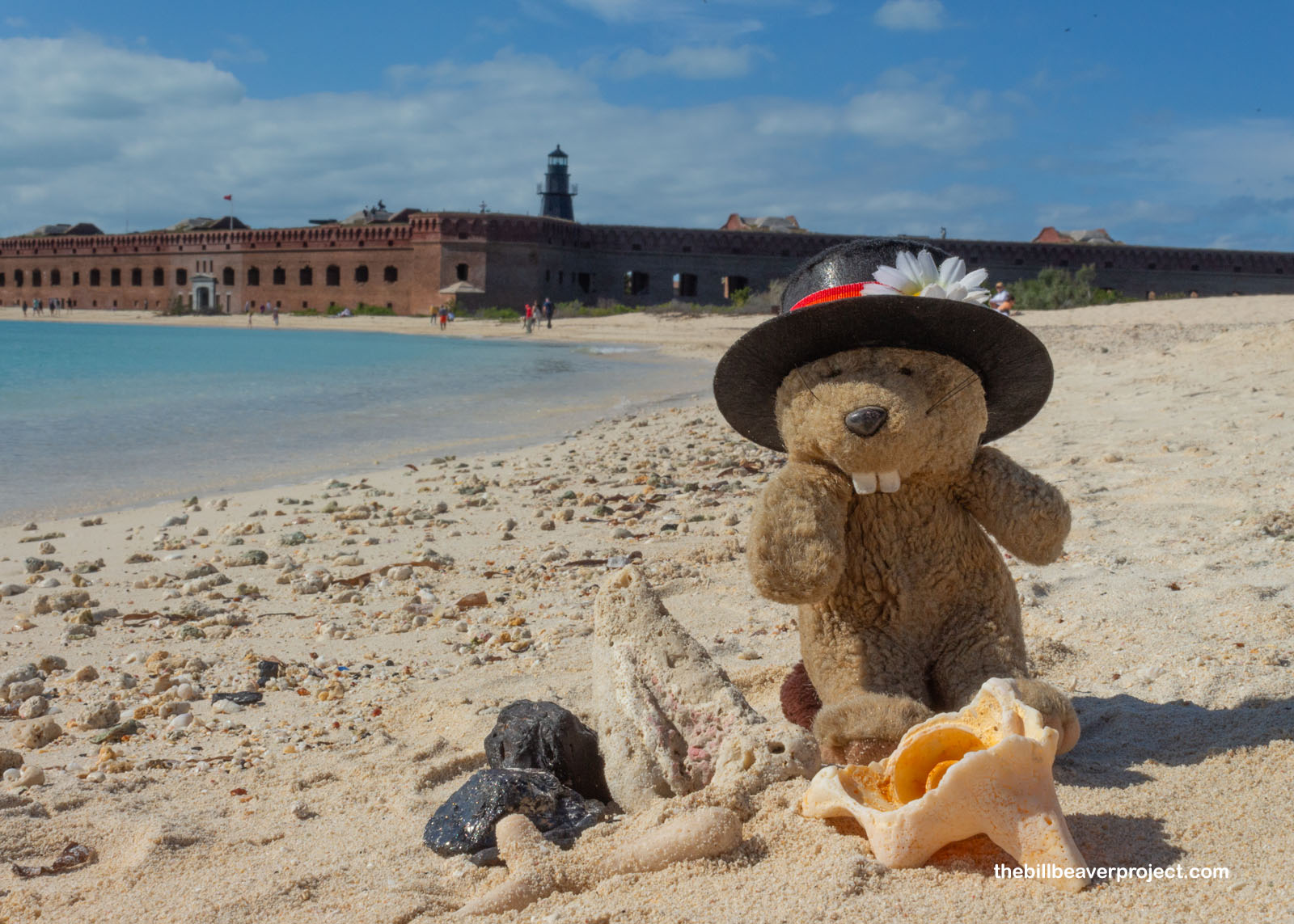 |
There was also some really neat brain coral washed ashore. In fact, the entire beach was absolutely covered with washed up coral of all kinds, a reminder that a key, unlike other islands, is made from sand piling up on a coral reef! Coral and keys are inseparable, which reminded me of a hidden tragedy at work here in the Florida Keys. See, coral gets most of its nutrients from a kind of algae called zooxanthellae, which is pretty temperature-sensitive. As water temperature rises, these zooxanthellae die off, cutting off the coral’s food supply and causing it to bleach. This starts around 87˚F, but the waters around Florida spent peaked around 93˚ for nearly four months last summer! It’s been the worst coral bleaching ever recorded and could take decades to centuries to recover!
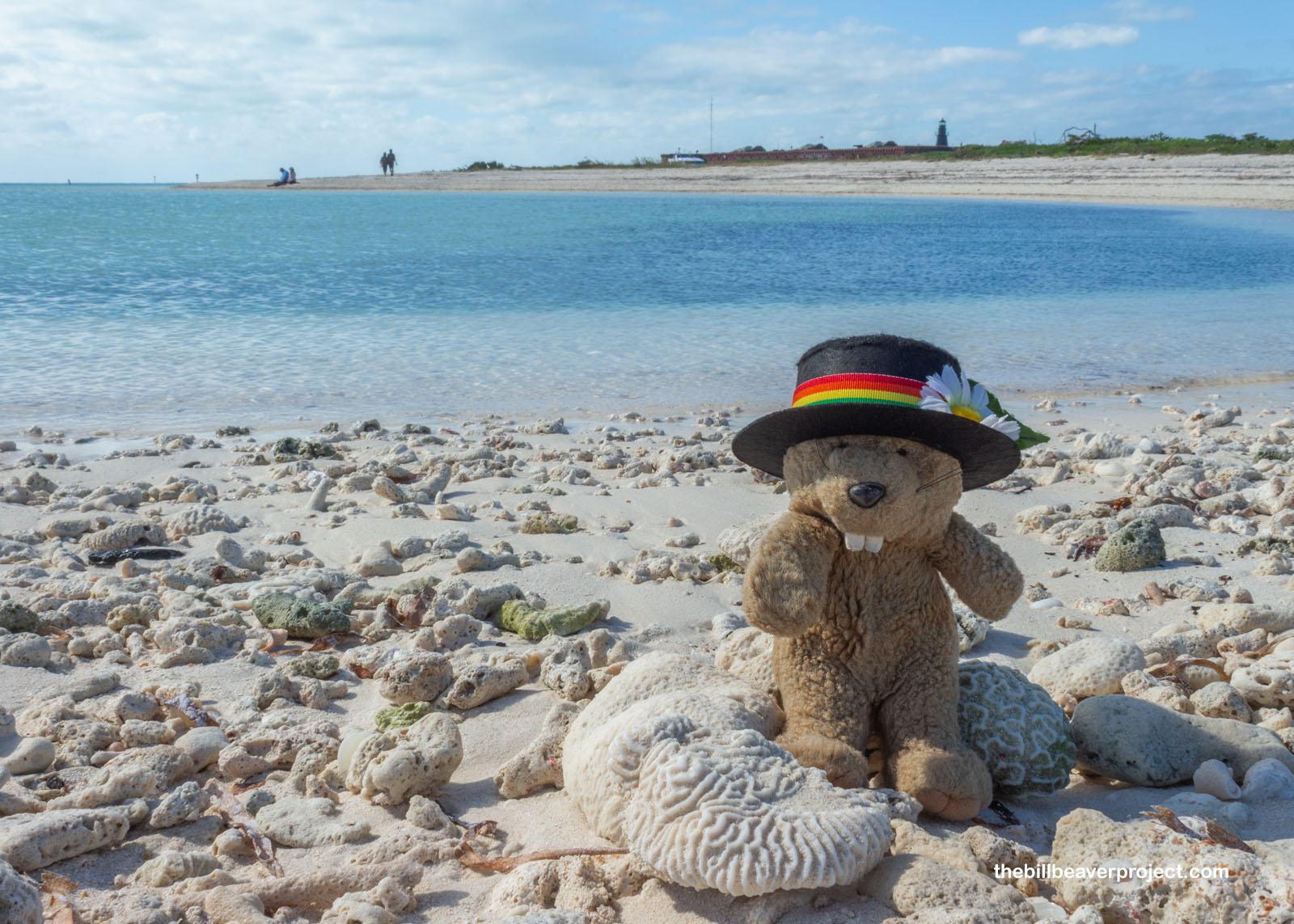 |
Even with this melancholy note, what had washed ashore remained beautiful in its own way. As a national park, beach combing isn’t allowed, so discovering beautiful shells, like huge conchs and intricate corals, is more or less like walking through a natural, me-sized sculpture garden! I thought they were breathtaking!
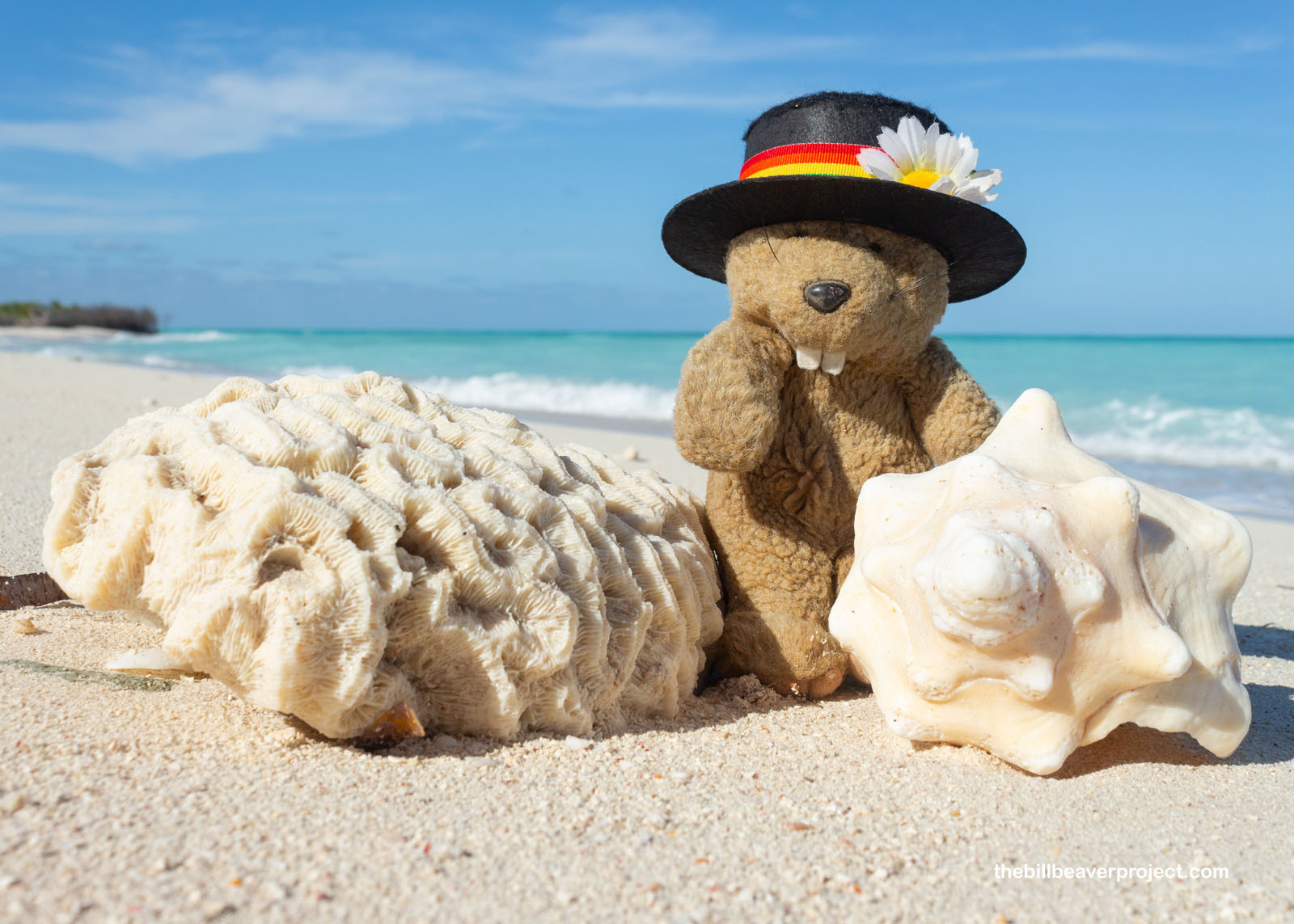 |
And whoa! I stopped short just in time before bumping into this Portuguese man-o-war! Good thing too. These jellyfish-like creatures have super strong stings long after they’ve washed ashore! Did I badly want to poke the gassy, blue pneumatophore that keeps these things afloat? Absolutely! Did I want a bunch of tourists offering to pee on the wound? No way! Fun fact: it’s vinegar, not pee, that makes a jellyfish sting feel better!
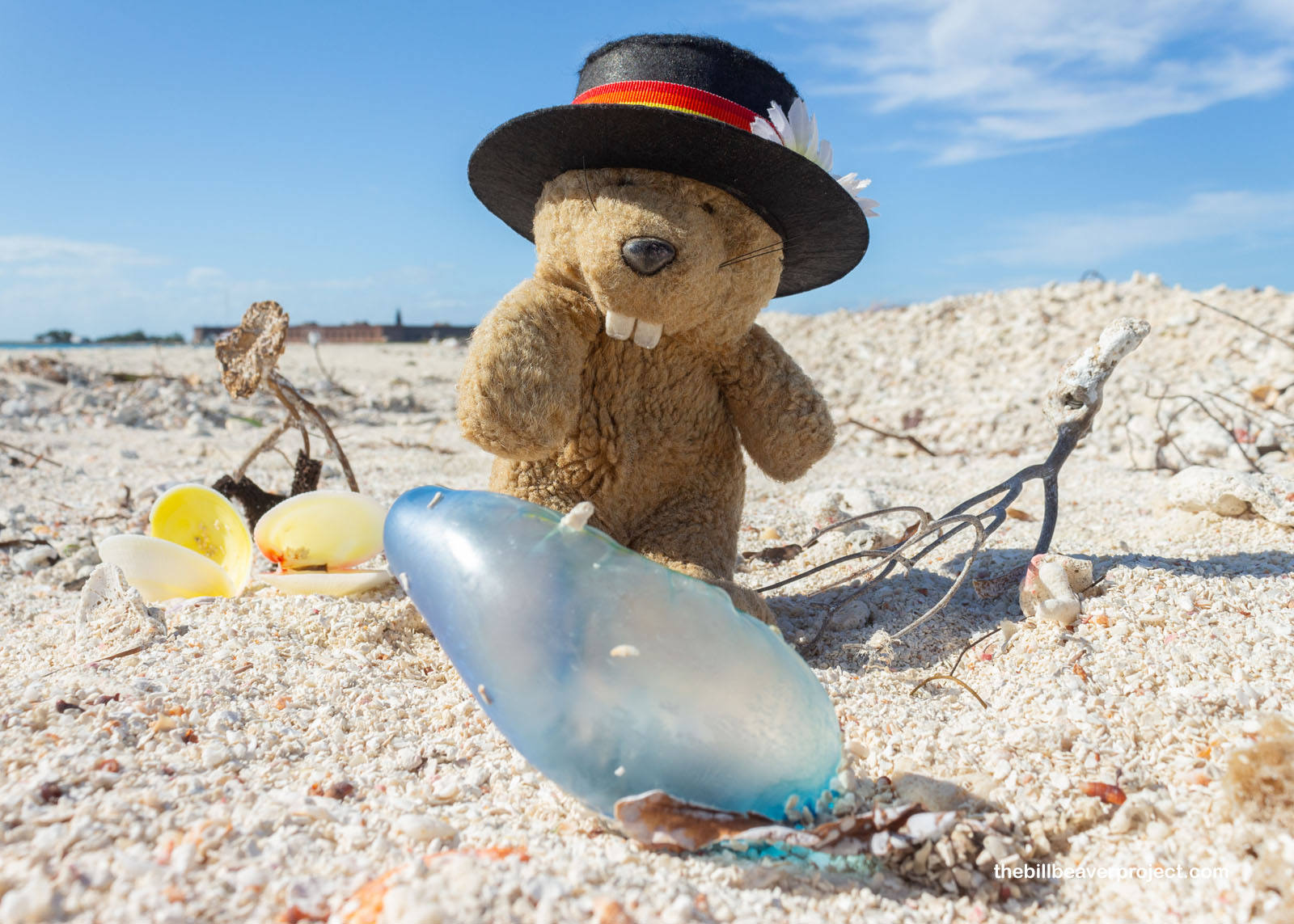 |
Then suddenly, I reached the end of Bush Key! I really thought there’d have been more to see, but that would probably take more days and special tours. After all, Dry Tortugas National Park covers many square miles of water, reefs, keys, and shipwrecks, and only so many boats and float planes come out here. I stared off into the distance toward a colony of nesting frigate birds, one of the magnificent species that specifically nests within the boundaries of Dry Tortugas National Park, and which the park helps to protect! I watched them gathering sticks delicately from the air (frigate birds rarely touch the ground) before hustling back to the boat in time for its return to Key West!
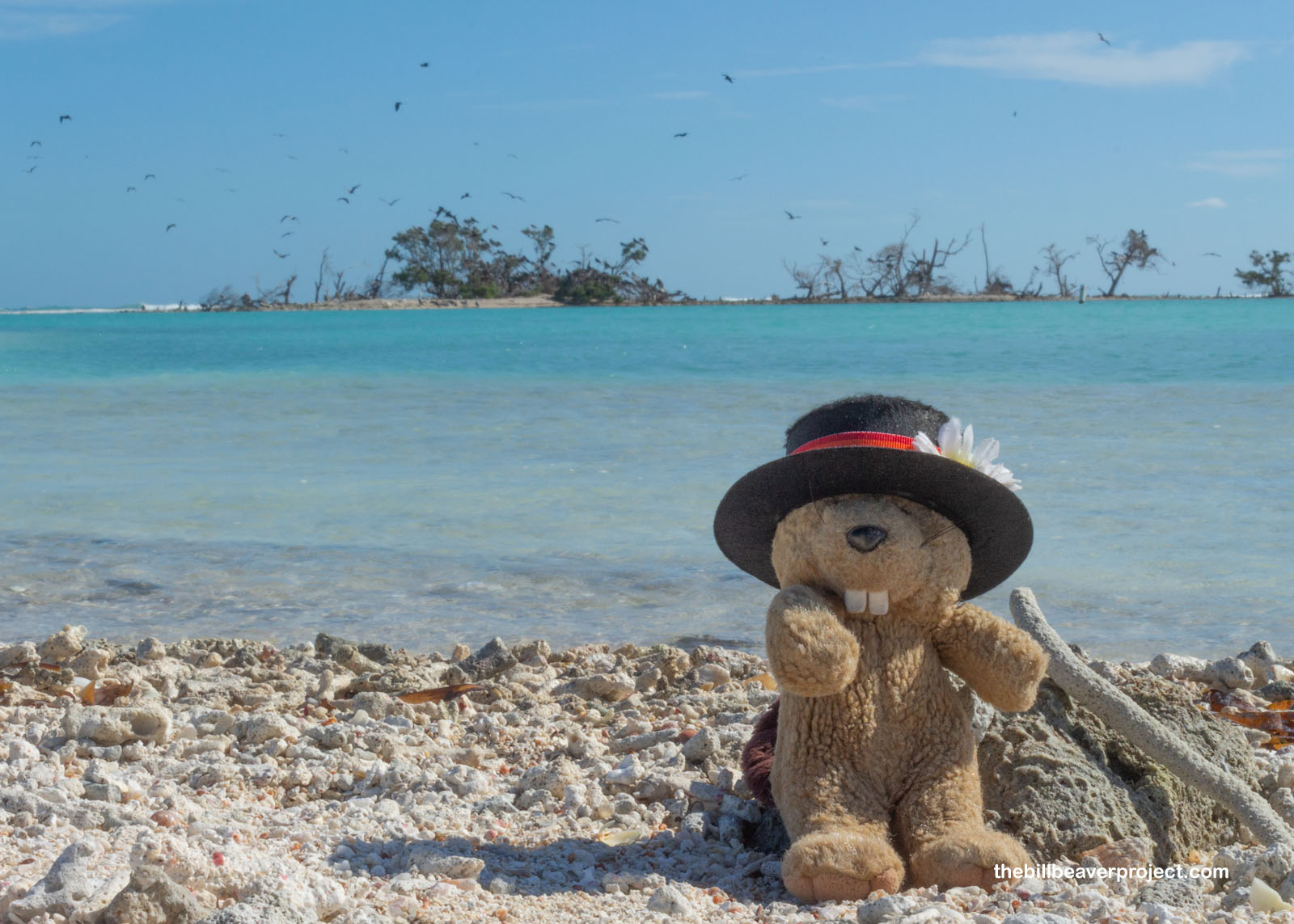 |
The return voyage was easier than the way out, mostly because I napped and hydrated much better. The sun was setting, but I wanted to take a quick tour about town. I wasn’t going to get much time here because of more logistical trouble I’ll get into later, so I hoofed it over to the start of US-1, Mile 0! Not to be confused with the Pacific Coast Highway, this is the longest north-south road in the USA! From Mile 0, it runs all the way to Mile 2,370 in Fort Kent, Maine! I’ll have to see if that’s anywhere near one of my upcoming destinations!
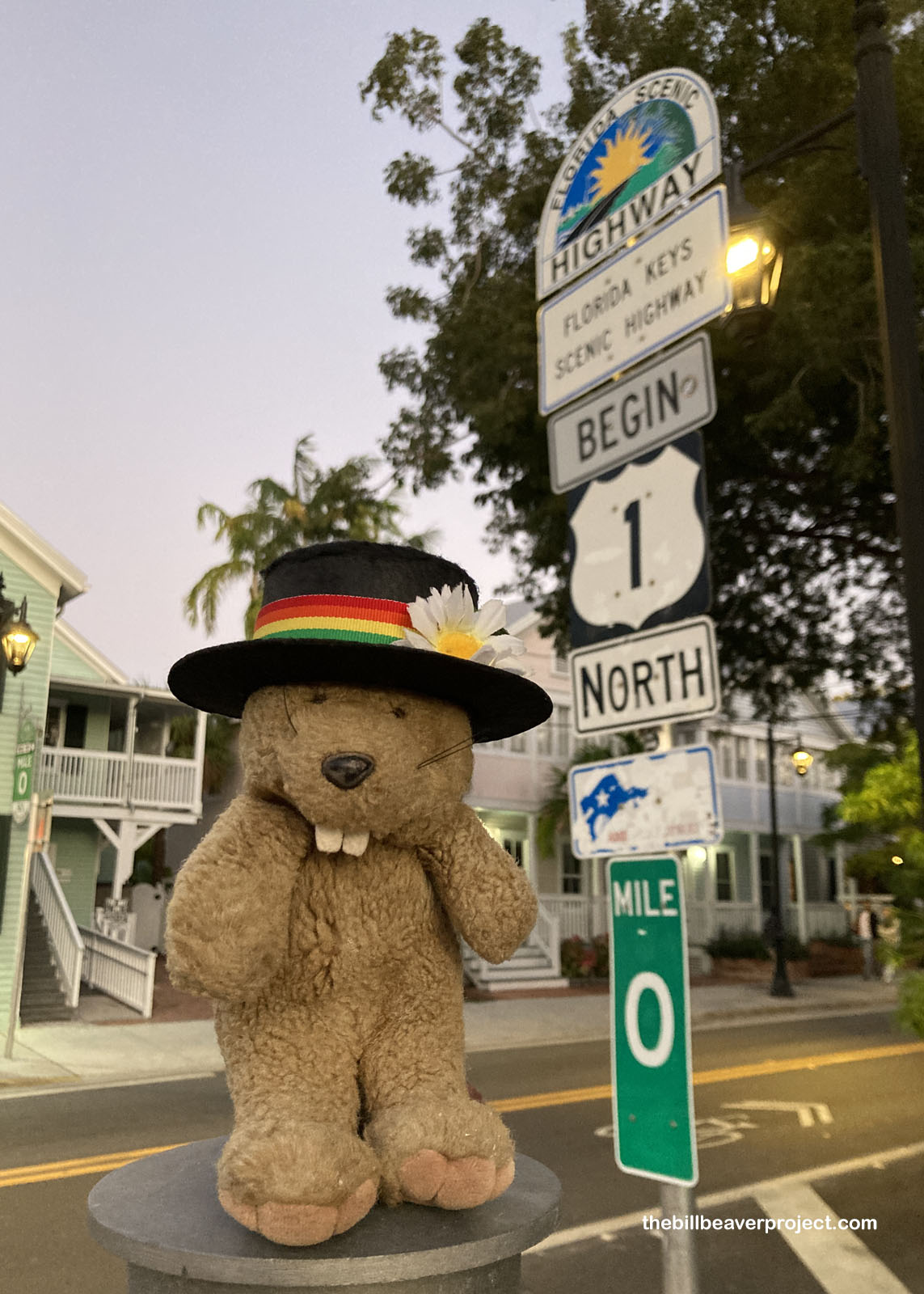 |
I had just enough light left to peek in to Ernest Hemingway’s home! The Nobel prize winning author of The Sun Also Rises, The Old Man and the Sea, and more, arrived in Key West with his wife, Pauline, in 1928. Here, he wrote A Farewell to Arms and learned all about sport fishing! The Hemingways loved Key West so much that they got Pauline’s Uncle Gus to buy them a house, which they renovated into the 1930s and lived here until 1940 when they divorced and Mr. Hemingway moved to Cuba!
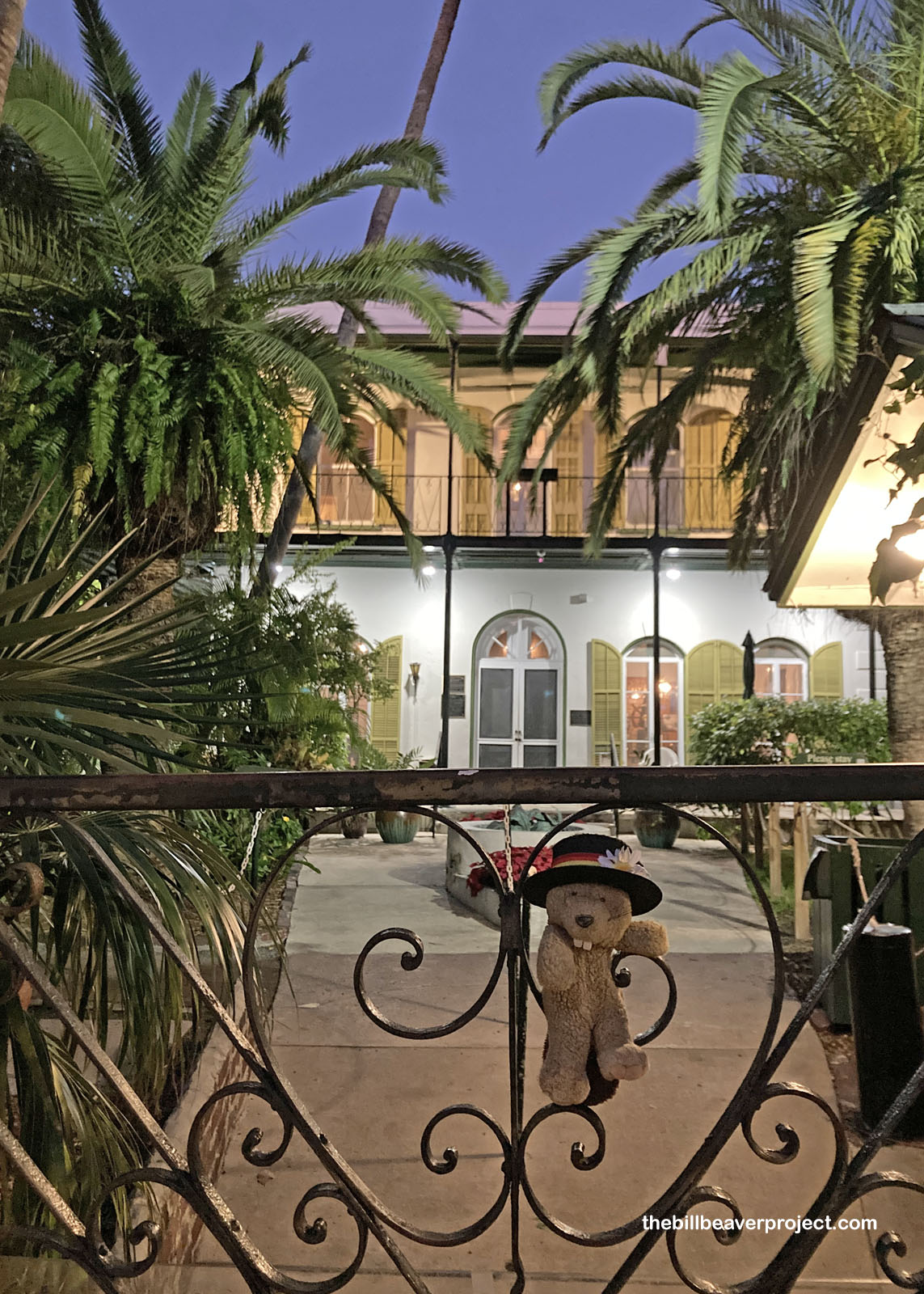 |
As night fell hard, I spotted one last light, the Key West Lighthouse, that is! This one’s the second of two versions, built in 1848 with a woman as head keeper! That was practically unheard of at the time, but Barbara Mabrity, whose husband, Michael, died in 1832, held the position as head keeper for over three decades! She probably would have kept going too, even beyond the age of 82, but her pro-Confederate views made her very unpopular in pro-Union Key West! This lighthouse shone all the way until 1969, when it was declared obsolete and made into a museum!
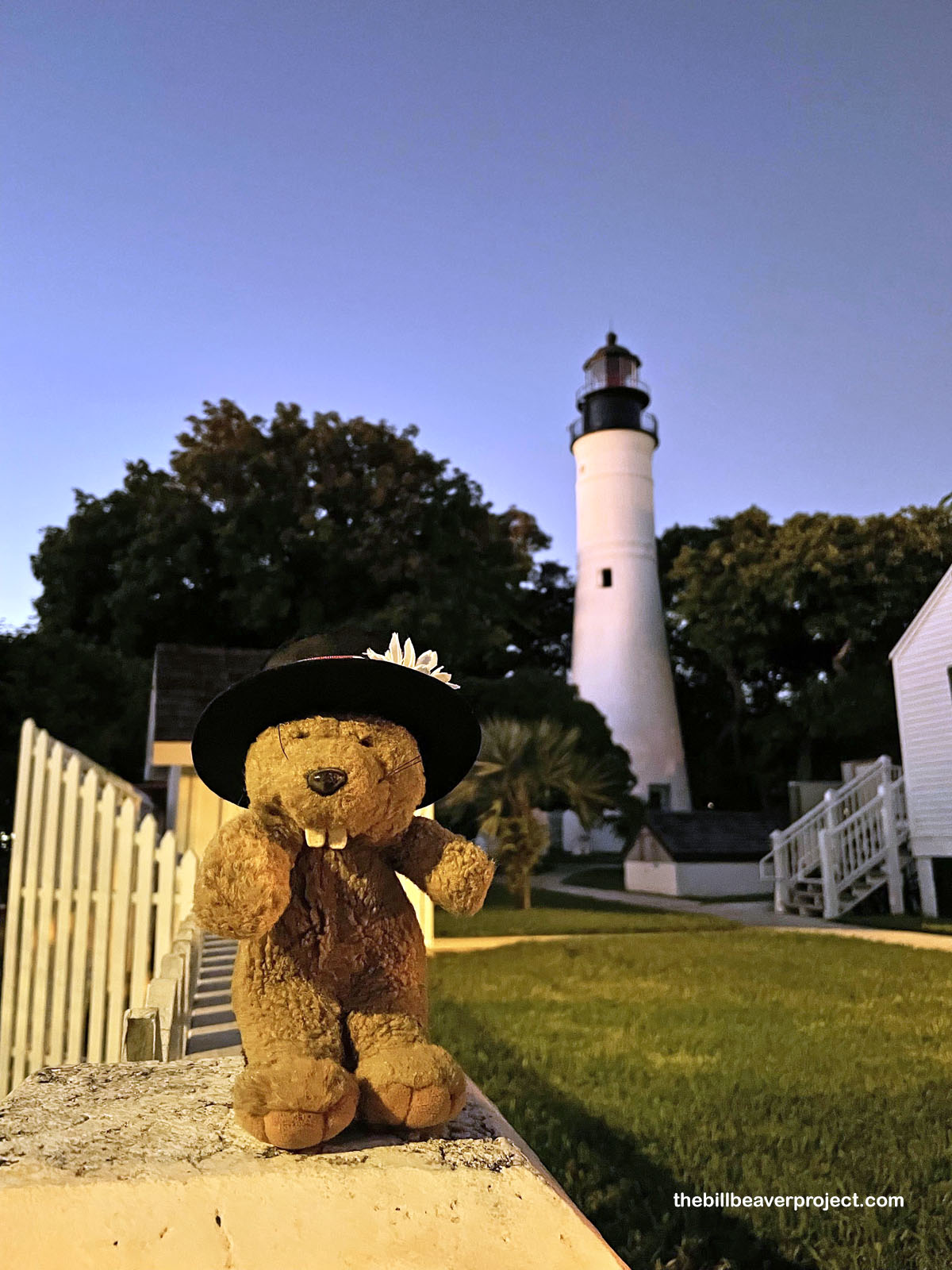 |
The sun set, and my stomach started rumbling, so before I turned in, I headed up Duval Street for a bite at Pinchers, where it was stone crab season! Fun fact: Stone crabs are one of the most sustainable seafoods! They’re filter feeders, so their claws are mostly ornamental, and when removed, they regenerate! This was a feast I could feel good about, and I did, before returning to the Duval Inn to hit the hay and prepare for another early morning and long drive. Tomorrow, I visit Biscayne National Park, and just like today, I’m racing to get on the only boat of its kind going out this week!
Wish me luck!

 More 2023 Adventures |
Total Ground Covered: 300.0 mi (482.8 km) |
 Next Day |
